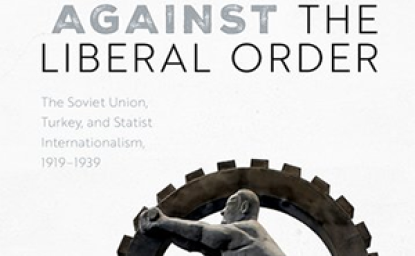The Ukraine Freedom Support Act, passed last month by the US senate’s Foreign Relations Committee, could mark a new kind of policy for the US in Ukraine. It doesn’t propose new sanctions, or the “major non-NATO ally” designation for Ukraine, Moldova and Georgia, but instead grants permission to send Ukraine a variety of weapons, ammunition, and specialized equipment to fill gaps in its current military’s capabilities, with $350 million authorized for this fiscal year.
It’s a clear statement of US commitment and is written with the best of intentions. But it completely misunderstands what Ukraine needs. And if the US goes down this road, it will be sleepwalking into a proxy conflict with Russia. That could prove as damaging for Ukraine as it did for the countries that hosted similar geopolitical competitions throughout the Cold War.
Weapons for an army that can’t use them
Even if sending arms to Ukraine were a good idea, it would come too late. For all intents and purposes, Ukraine’s battle for its breakaway regions was lost as of Sept. 5. Despite the ceasefire, fighting continues in select areas around Donetsk. The current discourse from Kyiv suggests some of the public and politicians think they can still regain the occupied regions through military force. This is clearly beyond Ukraine’s means, and will be even more so after the winter, when the separatists have consolidated their gains. Arming Ukraine will only encourage the hotheads.
Ukraine’s military is, in any case, in no condition to assimilate new weaponry. It needs comprehensive reform and modernization—coincidentally, something Russia’s military has been undergoing since 2008, with visible results. Ukraine’s army lacks the technical skills to operate and sustain its own equipment in combat, and cannot support its units in an extended fight. It has none of the enabling technologies, training, or command-and-control that would make good use of Western arms.
Weapons that will end up in the wrong hands
If the US sends weapons to Ukraine, there’s no telling where they’ll end up. Cash-strapped soldiers will probably try to pawn any Western gadgetry. The army relies on at least 7,000 volunteer fighters under different commands, some entirely privately funded by oligarchs, others based around far-right political beliefs. How will the US ensure that weapons supplied do not go to Ihor Kolomoisky’s privately funded Dnipro battalion, or that we will not see the Azov battalion driving around with its swastika-like Wolfsangel painted on American armored vehicles? The proposition seems even more dubious considering the number of tanks, rocket launchers, and armored personnel carriers that Ukrainian troops abandoned on the battlefield, to which pro-Russian separatists helped themselves. It’s an uncomfortable echo of Islamic State fighters driving around northern Iraq in American vehicles.
Even when these weapons are in the right hands, Ukraine’s anti-terrorist operation is more like Russia’s early wars in Chechnya than a methodical counterinsurgency campaign. The US may turn a blind eye to such actions, as it often did during Russia’s second Chechen war, but being a party to them is something altogether different.
Finally, proposing to send Ukraine an arsenal is a misreading of why it lost this conflict in the first place. Ukraine has no shortage of weapons, at least to take on the separatists. Even though a lot of its equipment broke down and was abandoned in combat, Ukraine’s army was gaining ground against the rebels until Russia decided to overtly invade in late August. At that point, no amount of extra battery radars or night vision goggles were going to change the balance of power.
The US would achieve far more, and risk much less, just taking the $350 million authorized for weapons and giving it to Ukraine to buy food and winter supplies for its forces. More arms will only exacerbate its confrontation with Russia, as well as giving credence to Moscow’s media campaign portraying Ukraine as a puppet and client state of the West.
Weapons that could encourage another disastrous war
On that score, the US should learn from its mistakes in Georgia. After the Rose Revolution in 2004, Georgia’s inexperienced new leadership, buoyed by Western training and military aid, was lulled into believing it could prevail in a conflict against Russia. In 2008, Russia’s military—more antiquated and poorly trained than it is today—crushed the Georgian army in a few days. It then drove away much of the modernized equipment Georgia had purchased, and destroyed a lot of the rest. After Ukraine’s corrupt officials are purged and replaced with young reformists, the leadership will probably mirror that of Georgia: Ideal for transforming the country, much less so for taking it to war.
So instead of arms or other advanced equipment, the US should work with Ukraine to make its armed forces smaller and more effective. That will take years. Ukraine can get parts from friendly neighbors to put its existing hardware back into action. Meanwhile the US should impress upon Kyiv private armies and volunteer units are a symptom of the military’s failure, not a solution for it.
Ultimately what Ukraine needs is money, and an economy that can sustain its military. That is where the US has done the least. Eugene Rumer commented in September that “US aid since the start of the crisis last year has fallen way short of the rhetoric.” Helping the economy will prove much tougher than reflexively loading weapons onto a ship, but if the economy rights itself, the military will follow.
The opinions expressed here are solely those of the author.
This article was originally published by Quartz.





